#Star Wars Adventure Journal
Explore tagged Tumblr posts
Text

Jedi, Sith, I'm the guy with the lightsaber (Chris Gossett, "Making Star Wars Comics Come to Life," Star Wars Adventure Journal vol 1, issue 2, May 1994, supplement for Star Wars: The Roleplaying Game and Star Wars Miniatures Battles by West End Games)
#Star Wars#Chris Gossett#Star Wars RPG#Star Wars: The Roleplaying Game#Dark Horse Comics#dark jedi#Star Wars Adventure Journal#jedi#lightsaber#sci fi#WEG#West End Games#1990s
98 notes
·
View notes
Text
Some legends Thrawn in adventure journal #7.











#star wars#star wars comics#grand admiral thrawn#galactic empire#thrawn#comics#thrawn trilogy#icons#comic#comic art#star wars adventure journal#sw comic#sw post#mitthrawnuruodo#mitth'raw'nuruodo#mitth ruling family#thrawn post#legends thrawn#expanded universe thrawn#expanded universe#star wars legends
27 notes
·
View notes
Text
Editor's Note from The Black Sands of Socorro by Patricia A. Jackson

While researching Patricia A. Jackson’s entire body of Star Wars work for a short story anthology, I came across the West End Games sourcebook Star Wars: The Black Sands of Socorro (1997.) It’s a crucial work of Star Wars ephemera: The first creator of color writing for Star Wars in an official capacity, writing not just about individual characters of color, but centering entire cultures populated by non-white characters. A young Black woman in the 1990s wrote science fiction for Star Wars, worldbuilding with concepts like antislavery, indigeneity, linguistic divergence, and settler colonialism...while Disney-Lucasfilm in the 2020s ineffectually positions Star Wars as a post-racial fantasy.
I non-hyperbolically refer to Patricia A. Jackson as the “Octavia Butler of Star Wars,” not because fans of color need to be officially sanctioned by Lucasfilm to create Star Wars content, but because of how difficult it is to carve out anti-racist space in a transmedia storytelling empire. Challenging even in transformational fandom spaces (e.g. fan works), to broach race in affirmational fandom spaces—or while writing content for the property holder—is to be unflinchingly subversive.
And Jackson did it first. In an interview with Rob Wolf in 2022, Jackson described her experience writing race into Star Wars in the 1990s as an “experiment.” The planet, peoples, and cultures of Socorro were a way for Jackson to obliquely, yet concretely, center Blackness and racial justice into Star Wars, pushing the racial allegory constrained by the original trilogy to its limits.
Since it’s inception, Star Wars has spent much of it’s storytelling on the fringes of the galaxy (whether it’s Tatooine or Jakku, Nevarro or Ajan Kloss.) The Black Sands of Socorro is an extension of that trope, but where the Star Wars films used indigeneity as set dressing (eg. “Sand People”, Ewoks, Gungans, etc.) Jackson creates a vivid world where indigenous culture and settler colonists collide; where characters are coded with dark skin and central to the action. The planet Socorro is distinct as a Star Wars setting. As one of the only places in the galaxy where slavery is eradicated with a vengeance, Socorro refuses to let go of a plot line Star Wars media often leaves behind. Socorro is a haven from Imperial fascism, a space where readers are invited to imagine a story that does not center around occupation.
When I learned that Patricia A. Jackson no longer has a physical copy of The Black Sands of Socorro, I realized that I had the materials and the means to create a fanbound hard copy for her home library (well, and also for my own home library.) While this handmade book is not an exact reproduction of the RPG supplement, I hope my renvisioning of the supplement as an in-universe travel guide lives up to the original work.
As the idea of creating a travel guidebook based on the original material percolated, I reflected on the State of Race in Star Wars in the year since I compiled Designs of Fate, an anthology of my favorite Patricia A. Jackson short stories. In May 2022, actress Moses Ingram debuted as Inquisitor Reva Sevander, the deuteragonist in the Dinsey+ streaming Obi-Wan Kenobi series. As predicted by Lucasfilm—and any fan sick of alt-right Star Wars related “whitelash”—Ingram was promptly subjected to a firehose of racialized harassment and misogynoir.
Yep, fascist self-proclaimed fanboys complained about a Black woman Inquisitor in 2022, having no idea (or deliberately whitewashing) that one of creators of the entire freakin’ concept of Inquisitors was a Black woman writing for the Star Wars Adventure Journal three decades ago.
Then, a public facing Star Wars account (@StarWars on Twitter) broke precedent and slapped back at the trolls. Lead actor Ewan McGregor filmed a video retort, posted on @StarWars, stating “racism has no place in this world” and telling off the racist bullies: “you’re no Star Wars fan in my mind.” A few months later, Disney+ debuted it’s second flagship Star Wars streaming series of the year, starring a Latino actor as the protagonist. In the opening episode of Andor, a police chief describes Diego Luna’s eponymous lead as a “dark-featured human,” perhaps the closest the franchise has ever gotten to acknowledging out-of-universe constructions of race, to date. The series explored aspects of imperialism with more depth than Star Wars had previously done on screen, such as the Empire’s treatment of the native people of Aldhani. And, in November, the The Acolyte, a Disney+ series co-developed by Rayne Roberts, announced Amandla Stenberg and Korean actor Lee Jung-jae as its top-billed leads. Stenberg will be the first Gen Z, mixed race, Black, Inuit, queer, and non-binary actor to lead a major Star Wars series.
On the Patricia A. Jackson Star Wars front, in 2022, Jackson’s character Fable Astin was an easter egg in the Obi-Wan Kenobi series. Jackson will again write for Star Wars in an official capacity in From a Certain Point of View: Return of the Jedi, due for publication in Fall 2023. A series about Lando Calrissian, the galaxy’s most famous Socorran, is still in production, so I have my fingers crossed that we may soon see Socorro on camera.
I wonder if this past year will have been a fulcrum year for BIPOC fandom. Maybe Disney has finally realized it’s bad for business that the alt-right uses social media algorithms and Star Wars fan spaces as a soft recruiting ground to radicalize young white men? Maybe Star Wars as a franchise will continue to loudly disavow fan whitelash and firmly position performers of color in true leading roles? I really hope so. On the other hand, as much as I am in favor of increased representation in Star Wars storytelling, I am also troubled by Disney-Lucasfilm’s framing of the Galaxy Far, Far Away (GFFA) as “colorblind.” Recently, Star Wars fans have been asked to accept that in the (a long time ago) sci-fi futurepast GFFA, humans have always been post-racial, and it’s just a coincidence that racialized people were not caught on camera the way white characters have been for years. The galaxy is post-racial and it’s just acoincidence that the movers and shakers of the galaxy have largely been depicted as white men for the past 40 years of media.
For example, in the decade since Disney rebooted the expanded universe, fans have learned that Star Wars’s biggest galactic war criminal to never be depicted on screen is Admiral Rae Sloane, a bisexual Black woman who was the leader of Imperial remnant forces, one of the architects of the First Order, and personal mentor to General Hux. Under Disney-Lucasfilm’s post-racial retcon of the Star Wars universe, the allegorical fascists are intersectional equal opportunity employers (at least in expanded universe content like animation, video games, and novels.) Along those lines, several of the franchise’s newly introduced, prominent women of color have been part of the Empire: Imperial loyalist Cienna Ree (Lost Stars), Inferno Squad leader Iden Versio (Star Wars: Battlefront II) former stormtrooper Jannah (Episode IX), First Order pilot Tamara Ryvora (Star Wars: Resistance), Inquisitor Trilla Sundari (Jedi: Fallen Order), Captain Terisa Kerrill (Star Wars: Squadron) and, most recently, Inquisitor Reva Sevander. Once the sole purview of stodgy, very white and very British men (demonstrably so even in the sequel trilogy movies,) now anyone can be a stooge of the Empire.
That’s not to say that marginalized people can’t collude with fascism, or that there haven’t been heroic characters of color introduced in recent years. Rather, I posit that in order to sell audiences on the post-racial/colorblind GFFA, fascist-of-color characters like Rae Sloane or Giancarlo Esposito’s Moff Gideon (The Mandalorian) are created by necessity. The franchise wants to at once be racially inclusive and yet never directly address race. In Star Wars, real world oppression is primarily explored through allegory—such as Solo (2018)’s bit on droid rights, the clone army, or the myriad of non-human alien bodies that nonetheless are coded with racial stereotypes. A lot has been said about how allegory in sci-fi allows audiences to grapple with inequality from a comfortable distance, and not enough has been said about which audience is being prioritized for comfort.
What does it mean when race is supposedly a non-issue for humans in the GFFA, but creators and actors with marginalized identities cannot participate in Star Wars in any capacity without experiencing identity-targeted harassment? In the past ten years, this has been true even for white women like Kathleen Kennedy and Daisy Ridley, but the vitriol has been most strongly directed towards Black women like Lucasfilm Story Group lead Kiri Hart, author Justina Ireland and The High Republic Show host Krystina Arielle. Can the Galaxy Far, Far Away truly be “colorblind” or “post-racial” (never-racial?) if the narrative continually centers white characters and replicates all the common racial inequities seen in commercialized Hollywood storytelling? Upon the release of The Force Awakens in 2015, critic Andre Seewood aptly described Finn’s positioning in the story as “hyper-tokenism,” even presciently predicting that Finn would continue to be hyper-tokenized in Episodes VIII and IX. As the narrative veered away from Finn, it also left unrealized a stormtrooper rebellion plot line where Finn could have been, in effect, a Black abolitionist. Actor John Boyega’s critique of his experience in the sequel trilogy aligns with Seewald’s assessment: “Do not bring out a Black character, market them to be much more important to the franchise than they are and then have them pushed to the side.”
Published in 1997, The Black Sands of Socorro came before Finn, before Mace Windu, back when all the melanin of Star Wars could be found in Billy Dee Williams’s singular swagger and James Earl Jones’s distinctive voice. Back then, the most prominent Black actress in the original trilogy was dancer Femi Taylor, who played Oola, the hypersexualized green twi’lek fed to the rancor in Return of the Jedi. Bantam Spectra, the publisher that held the license for Star Wars from 1991 to 1999, had no leading characters of color in its’ Expanded Universe. The first full length Star Wars novel by a writer of color, Steven Barnes’s The Cestus Deception15, would not be published until 2004. Even though the book featured two protagonists of color, they would not be depicted on the cover. At Comic-Con in 2010, I spoke with Tom Taylor, a white Australian comic book writer who tried to make the lead family in Star Wars: Invasion (2009) a Black one, but was shut down during the creative process. The comic instead depicts a family of blondes, because the publishers did not think fans would embrace leads of color. All this to say, the inclusion of melanated characters in Star Wars has been so, so hard fought. It’s incredible The Black Sands of Socorro exists at all. It’s more than worthy of celebration, and I’m floored that more attention has not been brought to it.
Patricia A. Jackson is a smuggler.
This sourcebook was explicitly written to assist fans in telling their own Star Wars stories, and in it Patricia A. Jackson smuggled in emphatic allusions to the Black Panther movement and the trans-Atlantic slave trade, smuggled in commentary on indigeneity and settler colonialism, and smuggled in multiple ways for fans to envision characters of color. Her writing has consistently added richness to the GFFA, and in The Black Sands of Socorro she envisions multiple histories for multiple cultures coded as non-white. She ensured the existence of not mere tokens, but flourishing societies of people of color in Star Wars.
The coda for The Last Jedi again shows how perilously close to tokenization characters of color, particularly Black characters, are in modern day Star Wars. In this film, the franchise returns to itsprevious exploration of slavery with the depiction of enslaved children on Canto Bight. The last speaking lines of the film are from Oniho Zaya (played by Josiah Oniha, a young Black British actor) who recounts Luke Skywalker’s heroic exploits to the other children. The film then closes out by showing that one of the downtrodden children is Force-sensitive—a future hero in the Star Wars mythos. In a film where every single Force-user depicted is white, the next generation kid with the potential is, again, a young white boy. Once again, the Black character can only serve the narrative in a supporting role. A franchise depicting a colorblind fantasy continually reifies racial and gender hierarchies in America. With The Acolyte, scheduled for release in 2024, it’s possible the franchise may finally be shifting past hyper-tokenism. In the meantime, fans of color and our erstwhile allies will continue doodling in the margins.
In the end, the sequel trilogy left the Canto Bight plot line (and the overarching slavery plot line started in Episode I) unresolved. I’d like to think the Black Bha’lir strafed Canto Bight and grabbed those kids. It seems like something they would do. Out among the stars, Oniho Zaya is adventuring with Drake Paulsen, and his story does not bracket another characters’; he is central. The Black Sands of Socorro is a launching pad for stories like that. It represents how fans of color have always carved out pieces of Star Wars for ourselves.
#socorro#star wars legends#swrepmatters#star wars adventure journal#star wars d6#patricia a. jackson#fanbinding#binders note
40 notes
·
View notes
Text

Cragus 12's Kazellis Corporation Kazellis-Class Light Freighter "The Claw"
Source: Star Wars Adventure Journal #1 (West End Games, 1994)
#star wars#starships#light freighters#bounty hunter vessels#kazellis corporation#kazellis class#cragus 12#claw#first appearance star wars adventure journal 1#star wars adventure journal#west end games#star wars ttrpg#star wars d6
5 notes
·
View notes
Text

Wishing a happy birthday to Michael Kogge! We were so thrilled to have him as a guest at last year's convention and hear his insights! Kogge has penned for such works as Star Wars Adventure Journal, Star Wars Gamer magazine, Hyperspace, and Star Wars Insider.
Photo by Trenton Tobin.
#Michael Kogge#Star Wars Adventure Journal#Star Wars Gamer#Hyperspace#Star Wars Insider#Expanded Universe#Star Wars Legends#Legends Expo#Star Wars Expanded Universe#SWEU#Star Wars EU#SW Expanded Universe
1 note
·
View note
Text

my comfort characters spread in my scrapbook
pinterest link here
#I should probably post these more often…#scrapbook#journaling#comfort characters#comfort spread#journaling spread#wayne family adventures#tim drake#the legend of korra#korra#heartstopper#alice oseman#nick nelson#jimmy kaga ricci#I was born fo rthis#star wars the bad batch#omega#ahsoka tano#star wars#hinata shoyo#haikyuu!!#reynie muldoon#the mysterious benedict society#todd anderson#dead poets society#abhishek tripathi#panchayat#ruchi singh#american born indian#melodyvega1967
21 notes
·
View notes
Text

Adventure Journal #07 (1995)
26 notes
·
View notes
Text


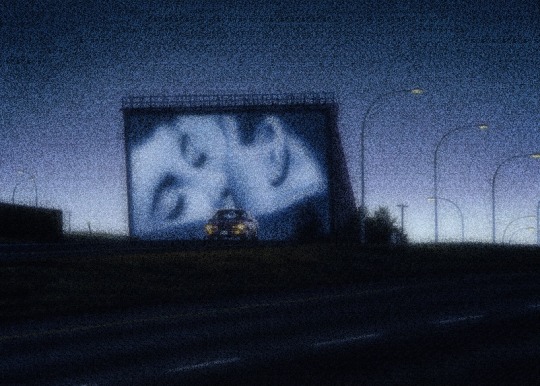

THE ROLES IN MY FAME DR. . .


quiet, quiet !!! centre stage, lights dimmed, audience hushed. my fame dr is essentially me winning the metaphorical acting olympics while everyone else is still lacing up their shoes. it’s, like, a line-up of roles so iconic, so overpowered, it’s like i’m thanos snapping my way through hollywood history. i wanted the cookie, and i baked the whole bakery.
here’s the rundown.....each role is a slice of cinematic perfection, OKAY, served with a side of "how does she do it? why does she do it?? how many oscars do you need??" energy.




꒰ 2002. . . ' PONETTE ' as ponette. — picture a four-year-old (shut up) absolutely devastating audiences, grappling with grief and holding onto the wisp of hope that her mom might waltz back from the afterlife. tiny me..... heartbreaking. oscar-worthy. a pint-sized tour de force !!!
꒰ 2006. . . ' LITTLE MISS SUNSHINE ' as olive. — quirky underdog vibes. a beauty pageant dreamer dragged through chaos on a family road trip. big glasses, bigger heart. adorable chaos incarnate.
꒰ 2007. . . ' LÉON: THE PROFESSIONAL ' as mathilda. — street-smart, sharp-tongued, and navigating grief and revenge. turned “child assassin vibes” into a genre.... unlikely bond with a hitman? groundbreaking.
꒰ 2008. . . ' ATONEMENT ' as briony tallis. — precocious young writer turned accidental chaos agent. one little misunderstanding, and boom !! tragedy for everyone. the literary girls wept.
꒰ 2009. . . ' TRUE GRIT ' as mattie ross. — fearless teen avenger with a rifle and a vengeance. sharp-tongued, sharp-shooting. unstoppable.
꒰ 2011. . . ' LOLITA ' as lolita /// dolores haze. — a beguiling and precocious girl cloaked in innocence but steeped in rebellion, a mix of youthful charm and intoxicating danger. made everyone very uncomfortable because it wasn't directed by a pervert but instead an actual person who understood the book !!
꒰ 2012. . . ' MOONRISE KINGDOM ' as suzy. — whimsical runaway girl with a suitcase full of records and big dreams, embarking on an adventurous and heartfelt runaway journey with her first love.
꒰ 2013. . . ' BLACK SWAN ' as nina sayers. — the drama. the descent into madness on the basis of perfection. a ballerina teetering on the edge of perfection and chaos.
꒰ 2014. . . ' THE GRAND BUDAPEST HOTEL ' as agatha. — the sweet baker who saves the day in a pastel-hued, heist-filled fever dream. you could say i was the cinnamon roll that held the plot together.
꒰ 2015. . . ' CINDERELLA ' as cinderella. — glass slippers, big dreams, unapologetic faith in the universe. cottagecore princess moment.
꒰ 2017. . . ' LADY BIRD ' as christine "lady bird" mcpherson. — high school angst meets big-city dreams. small-town girl, big personality, fiercely independent. greta gerwig girlies cheered.
꒰ 2019. . . ' ROMEO AND JULIET ' (dir. sofia coppola) as juliet. — tragic romance, youthful rebellion, a modernised shakespearean masterpiece. the english teachers are obsessed.
꒰ 2019. . . ' ONCE UPON A TIME IN HOLLYWOOD ' as sharon tate. — an enchanting actress and rising star, embodying the golden glow of hollywood’s bygone era with grace and optimism.
꒰ 2019. . . ' LITTLE WOMEN ' as amy march. — ambitious, artistic, unapologetically confident. justice for amy achieved!!!
꒰ 2019. . . ' STRANGE COLOURS ' (dir. david lynch) as naste. — struggling sculptor in post-war 1950s paris, whose pursuit of success leads her to morally complex decisions in a crime and punishment-inspired tale.
꒰ 2020. . . ' THE QUEEN'S GAMBIT ' as beth harmon. — a brilliant yet troubled chess prodigy navigating personal demons, ambition, and addiction while conquering a male-dominated world.
꒰ 2021. . . ' THE FRENCH DISPATCH ' as juliette. — a cynical and enigmatic character in a whimsical anthology capturing the spirit of journalism and artistic eccentricity.
꒰ 2021 . . . ' PROFIL PERDU ' as josée. — a woman caught in a crumbling marriage, drawn into a web of intrigue and liberation when a wealthy magnate offers her a new life filled with possibilities.
꒰ 2021 & 2023. . . ' SUCCESSION ' as lukas matsson's complicated girlfriend. — it’s giving chaos. it’s giving scandal. the girl who walked into the roy / mattson power vortex and made it just a tad messier.
꒰ 2022 & 2025. . . ' SEVERANCE ' as helly r. — kafkaesque corporate dystopia, dual personalities, fighting against the machine. the drama of it all.
꒰ 2022. . . ' X ' as maxine. — it’s sexy, it’s terrifying, it’s iconic. a daring and ambitious young woman pursuing fame in the adult film industry while navigating fear and survival in a horror setting.
꒰ 2022. . . ' PEARL ' as pearl. — a dreamer turned unhinged by isolation and frustration, whose violent tendencies emerge as her craving for stardom spirals into tragedy.
꒰ 2023. . . ' POOR THINGS ' as bella baxter. — a curious and eccentric woman reborn into a surreal world, exploring life with uninhibited wonder and self-discovery. an eccentric frankenstein moment.
꒰ 2023. . . ' THE HUNGER GAMES: THE BALLAD OF SONGBIRDS & SNAKES ' as livia cardew. — capitol decadence personified. the symbol of privilege and mean-spirituality. as well as coriolanus snow's future wife.
꒰ 2024. . . ' MAXXXINE ' as maxine. — a raw and determined character fighting to make her mark in a world that feeds on fame, continuing her saga in the x-pearl trilogy.
꒰ 2025. . . ' FRANKENSTEIN ' as the bride. — a haunting and tragic figure, torn due to her her husband's newest project.



that oscar is practically monogrammed with my soul. engraved, embossed, bedazzled in my honour. if possession is nine-tenths of the law, that golden man is legally, spiritually, and cosmically mine. you ever look at something and just know?? that’s me with oscar excellence. signed, sealed, delivered. twice for emphasis.
also....dividers not mine !!!!!
#shifting#reality shifting#emmas fame dr#desired reality#realityshifting#shifting community#shifting motivation#shifting realities#reality shift#fame dr#shifting antis dni#shiftingrealities#reality shifter#shifting reality#kpop shifting#reality shifting community#reality shifting methods#shifting advice#shifting blog#shifting consciousness#shifting memes#shifting ideas#shifting script#shifting stories#shifting methods#shifting storytime#shifting realities stories#shifting thoughts#shifting tips#shifting to desired reality
253 notes
·
View notes
Text
Linked Universe AU Directory
Anyway, I didn't put every single AU on this thing. I do not have the time and energy for that because there's over 600 LU works tagged as alternate universes on Ao3. I did follow some general guidelines when I was deciding which works to add, the most important one being that the AU had to be more than just canon divergence and had to affect all the characters equally. Feel free to add onto this post, if you think something is missing.
Link to the Ao3 Collection
Age Swap | Age Shuffle AU
Apocalypse - Unspecified | Brothers In Arms
Apocalypse - Zombies | Autolysis
Apocalypse - Zombies | LU Zombie AU
Fae | Across the River
Fae | Flower Garden
Fae | From Open Seas, to Dark Tangled Depths
Folklore | If You Thought This Was Gonna Have a Cool Title, You Obviously Don't Know Me
Fusion - Alice's Adventures in Wonderland | Hyrule's Adventures in Wonderland
Fusion - Among Us | Good Riddance
Fusion - Atlantis: The Lost Empire | The Sage's Journal
Fusion - Big Hero 6 | Fierce Hero 9
Fusion - Captain America: Civil War | United We Stand, Divided We Fall
Fusion - Dungeons & Dragons | LU x DnD Crossover
Fusion - Full House | Full House AU
Fusion - Lethal Company | Linked Company AU
Fusion - Lethal Company | Linked Universe AU: Lethal Company
Fusion - Mad Max | And the World Ends Again
Fusion - Monstrous Regiment | Linked Regiment
Fusion - Nailed It! | You Really Nailed it Right There, Buddy!
Fusion - Pokémon | LU Pokémon AU
Fusion - Pride and Prejudice | Pride and Prejudice but it's a Fair-Play Whodunnit
Fusion - Tangled | LU Tangled AU
Fusion - The Hunger Games | LU Hunger Games AU
Fusion - The Incredibles | Linked Universe Incredibles AU
Fusion - The Secret World of Arrietty | The Secret World of Wild and Twilight
Fusion - Spirited Away | One Summer's Day
Fusion - Star Wars | Tales of Courage from Across the Galaxy
Fusion - Warrior Cats | Faronclan AU
Gods & Goddesses | And the Universe Said "I Love You"
Heist | Heist AU
Historical - 1800s | City of Light and Dark
Historical - Supernatural | 1931
Science Fiction - Space Crew | Linked Nexus
Mermaids | Flared Fins
Miscellaneous - Disability | Shatterproof
Miscellaneous - Intrigue | Castle Intrigue
Miscellaneous - Magic | We Could be Immortals
Miscellaneous - Unspecified | Eyes Wide Open
Miscellaneous - Unspecified | Manus Lupus
Modern | Adoption AU
Modern | Barking Up the Wrong Tree (At Least We're Barking Together)
Modern | In the Heart of Hyrule
Modern | LU Modern AU
Modern | Modern Zeldas AU
Modern | Ranch House AU
Modern | The Many Realities of the Hero Spirit and Modern Living
Modern | The Roadtrip AU
Modern | The Weather Outside is Frightful
Modern - Actors | Linked Universe Actor AU
Modern - Coffeeshop/Café | Looking for Group
Modern - College/University | All You Need to Know
Modern - College/University | Linked University
Modern - College/University | Oh No, They're Theater Kids Now
Modern - College/University | RIP
Modern - Emergency Services | Of Officers and Stuffed Elephants
Modern - Farm | Fresh from the Farm
Modern - Ghost Hunters | A Haunting in Hyrule
Modern - Healthcare | How to Save a Life
Modern - Healthcare | LU in Healthcare
Modern - Magic | Everything but Blood
Modern - Magic | Family is Made of...
Modern - Magic | Maybe Human
Modern - Magic | Summer Camp Lon!
Modern - Magic | The Chain that Binds Us
Modern - Magic | Wild's Magic Shop AU
Modern - Monsters | Here There Be Monsters
Modern - Movie Theater | There's a Remlit... Loose in the Theater!
Modern - Music Camp | Linked Repertoire
Modern - Newsroom | BSX: Hyrule SatellaNews
Modern - Newsroom | Professions and Professionals
Modern - Office | Linked Corporations
Modern - Opera | Opera House AU
Modern - Retail | The Hot Topic Debate
Modern - Retail | What Goes Down at Festival Foods
Monsters | Seelies and Selkies
Murder Mystery | How to Kill a God
Post-Nuclear War | Chain Reaction
Royalty | I'll Be There
Royalty | Royal Links AU
Royalty | Lost Prince AU Part 1 & Lost Prince AU Part 2
Royalty | You and Me Aglow
Soulmates - Platonic | Marks on Your Body, Marks on Your Soul
Soulmates - Romantic | Castle Town Coffee Shop
Vigilantes | Empty Streets Full of Life
Vigilantes | We Will Find You, Wherever You Are
Wings | Four's a Dad!?
Wings | Wings AU
Wings | Wing Bois
202 notes
·
View notes
Text

"Fragments of the Mind's Eye" was a single panel comic appearing in many issues of the Star Wars Adventure Journal in the 90s. (Pablo Hidalgo, in vol 1, issue 9, February 1996, West End Games)
#Star Wars#Pablo Hidalgo#gaming humor#Hoth#Star Wars Adventure Journal#Hoth weatherman#weatherman#Star Wars: The Roleplaying Game#Star Wars RPG#WEG#West End Games#winter#1990s
147 notes
·
View notes
Text
A few other wonderful shows I wanted to shoutout for BIPOCtober, with BIPOC creators and/or leads:
A Ninth World Journal: Based on Numenera, a tabletop roleplaying game, and written, produced and performed by David S. Dear (plus guests). Set one billion years in the future… it’s the story of Januae, a man who randomly teleports to strange and dangerous places with no way of controlling it.
@meteorcitypod: In 2008, a freak meteor shower hit Detroit, killing hundreds and displacing thousands. Hundreds of people were quarantined for radiation exposure. 10 years later, Bianca Diaz, a vlogger returns to tell the stories of the dead, the missing, and the remaining citizens of Detroit, now called Meteor City. Shortly after returning, Bianca realizes that Meteor City, New Detroit, and the people left behind are not what they appear to be...
@witcheverpath: An interactive horror anthology podcast. Their current story is Message in a Bottle. A siren misses what was taken from her, but as she swims out to sea, she discovers a bottle that may change the course of her life.
@radio-outcast: A fantasy-western audio drama. When Helix, the Messenger God of Sound, gets yanked from the 1980s and sent to the 1880s by her abusive ex-lover, the God of Time, she must forge unlikely alliances with two humans: Jesse, a cowboy out for revenge, and Charles, a conman running from his past. The three of them embark on a journey across the American West, each with their own goals and secrets waiting to be revealed
@vegapodcast: A Sci-Fi Adventure Podcast!: In a fantasy futuristic world, Vega Rex is employed by her government to kill off the world's worst criminals. She's never met a criminal she couldn't catch...until now. Join Vega as she journeys through a world of bumbling apprentices, powerful technogods, and her biggest challenge yet
@noadventurespod: A fantasy (un)adventure story that follows Sig, the owner of Signature Eats bakery, as he aggressively avoids becoming embroiled in any daring quests or chosen one shenanigans even though the universe really seems to want him to do just that. This is a story about cutting the Hero’s Journey off at the knees to chill with friends. And also baking. This is also a story about baking.
Harlem Queen: A Black historical fiction audio drama based on the life and times of Black, woman, gangster "Numbers Queen" Madame Stephanie St. Clair during the Harlem Renaissance (the story takes place around 1926-32). She fought the "big boys" (Lucky Luciano and Dutch Schultz) and won.
@herebedragonspod: When the body of a previously unknown aquatic creature washes up on shore, four women are called together for the expedition of a lifetime. Tasked by the U.S. Government to find and record evidence of this new breed of sea monster, Harper Bennett, Pippa Cambell, Lt. Commander Adrienne Scarlett and Dr. Natalya Atlas set off into the untamed wilds of The Bermuda Triangle.
@unwellpodcast: A Midwestern Gothic Mystery. Lillian Harper moves to the small town of Mt. Absalom, Ohio, to care for her estranged mother Dorothy after an injury. Living in the town's boarding house which has been run by her family for generations, she discovers conspiracies, ghosts, and a new family in the house's strange assortment of residents.
Fan Wars: The Empire Claps Back: A not-so-romantic comedy about two star wars fans on opposite sides of the Last Jedi debate.
#a ninth world journal#meteor city pod#witchever path#radio: outcast#vega podcast#unwell podcast#harlem queen#absolutely no adventures#here be dragons#here be dragons podcast#fan wars: the empire claps back#bipoctober#podcast recs
116 notes
·
View notes
Text
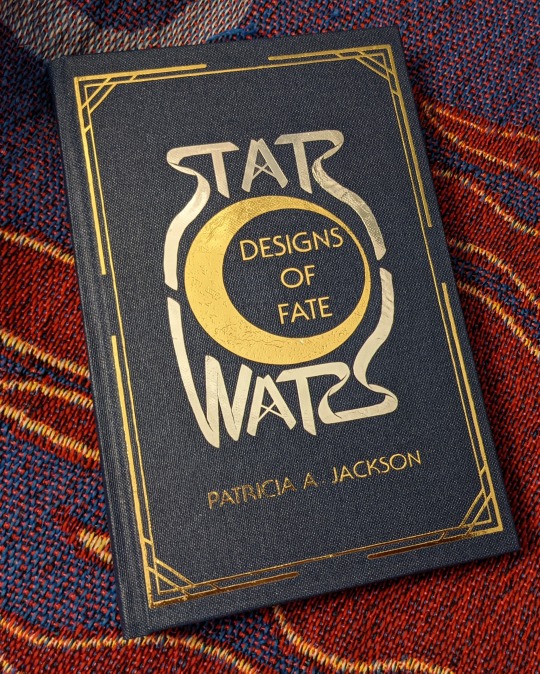
Editor's Note from my bind, Designs of Fate, an anthology of Star Wars stories by Patricia A. Jackson.
Patricia A. Jackson is a criminally underrated Star Wars author.
I’ll explain.
Growing up in the late 1990s and early 2000s, it was challenging to be an adolescent Star Wars fangirl, particularly an Asian American one. Back then, fandom meant negotiating male-dominated online message boards where identifying as a teenage girl meant inviting a ‘fake geek girl’ grilling at best and sexual harassment at worst. Most of the published Star Wars books were about Han, Leia, and Luke. Han and Leia were in their thirties and the parents of three children...not super relatable for preteen me. As far as character development was concerned, our “Big Three” had established characterizations coalesced firmly on the side of good. For our heroes, there was no moral ambiguity as, novel by novel, they tackled the galactic Threat of the Week.
Bildungsromans, those books were not. When Jackson started writing Star Wars in the 1990s, there were no women Jedi or protagonists of color. If you wanted stories with original characters coming of age, your primary recourse was the West End Games’ Star Wars Adventure Journals and their published anthologies, Tales from the Empire (1997) and Tales from the New Republic (1999). I remember avidly poring over my dogeared paperback copies and stalking the internet for scans or transcriptions. Although I never played the D6 role-playing game, the short stories from the Star Wars Adventure Journals helped me envision that a character like me—a young Asian girl coming into her own—did have a place in Star Wars after all.
As evinced by the vitriolic reactions towards John Boyega and Kelly Marie Tran during the production of the sequel trilogy, Star Wars fandom can be a hateful environment for proponents of diversity and inclusion. A small but irritatingly loud faction of fascist-leaning, cishet, white male fans are actively hostile towards fans who advocate for change; they are more troubled by the presence of queers, women and BIPOC than our absence. Because of the ubiquity and popularity of Star Wars in America’s cultural milieu, the sentiments from these self-appointed gatekeepers have been—and continue to be—amplified by right wing extremists, and, to some extent, even by the Internet Research Agency as tools of Russia’s psychological and cyber warfare against the United States. During his Ph.D. candidacy with the Department of Information Studies at UCLA, Morten Bay, PhD., studied negative tweets about The Last Jedi and found that 50.9% of negative tweets were “bots, trolls/sock puppets or political activists using the debate to propagate political messages supporting extreme right-wing causes and the discrimination of gender, race or sexuality.”
“Russian trolls weaponize Star Wars criticism as an instrument of information warfare with the purpose of pushing for political change,” he wrote, “while it is weaponized by right-wing fans to forward a conservative agenda and for some it is a pushback against what they perceive as a feminist/social justice onslaught.”
The creation and inclusion of characters with minoritized identities in Star Wars is, therefore, an act of resistance. As far as I’m aware, Patricia A. Jackson was the first woman of color and Black author to write for the Star Wars expanded universe. Jackson has described the fan environment in the 1990s thusly; like many minoritized fans of color, she would be given pithy justifications such as "Well, there’s no Africa in Star Wars, so there are no Black people." Jackson noted, aptly, "That was just translation for “’You don’t matter. You don’t need to be here.’” Jackson's work for West End Games, particularly her sourcebook The Black Sands of Socorro, is a subversion of those expectations.
Before anyone else did, Jackson showed fandom that dominant mayo masculinity did not have to be the only way to tell Star Wars stories. Her stories existed before the prequel trilogy and three decades of Star Wars publishing, before FanFiction.net, Archive of Our Own, or Wattpad. She is the forerunner for BIPOC writers in Star Wars, followed by other luminaries like Steven Barnes, Daniel José Older, Nnedi Okorafor, Rebecca Roanhorse, Ken Liu, Greg Pak, Alyssa Wong, Sarah Kuhn, Saladin Ahmed, C.B. Lee, Justina Ireland, Alex Segura, Zoraida Cordova, Greg VanEekhout, Mike Chen, Charles Yu, R.F. Kuang, Sarwat Chadda, Sabaa Tahir, and Renée Ahdieh.
Jackson had and continues to have an incredibly prescient understanding of what makes a good Star Wars story. Any of the stories in this anthology could find a home as an anime short from Star Wars: Visions (2021). Ideas from Jackson’s Star Wars short stories have appeared in later media, sometimes decades later. Whether convergently evolved or directly influenced, the parallels are astonishing: Kierra, the snarky feminine droid consciousness who inhabits Thaddeus Ross’s ship, is a spiritual predecessor to L3-37, Lando Calrissian’s snarky feminine droid companion from Solo (2018) who ends the film uploaded to the Millennium Falcon. Jackson addressed concepts like slavery and Force healing predating the prequel and sequel trilogies. In “Idol Intentions,” she created an adventuring academic on the hunt for artifacts long before Kieron Gillen brought Doctor Aphra to life. Squint and the upturned red salt on the planet Crait in The Last Jedi becomes flying red soil on the planet Redcap. Dark haired, dark side tragic emo boy starcrossed with a fiery girl Jedi?—I think Jackson understood intuitively the appeal of this trope to a woman-dominated contingent of fandom well before “Reylo” topped Tumblr’s fan favorite relationship charts in 2020.
Jackson’s work is also significant for deepening world building. Much like how Timothy Zahn introduced analysis of fine art to Star Wars with his villainous art connoisseur Grand Admiral Thrawn, Jackson’s stories introduced concepts such as the evolution of Old Corellian, the acting profession, and Legitimate Theatre. These elements added verisimilitude to the expanded universe; it makes sense that different cultures in Star Wars would have archaic languages, folk songs, and old stories of their own from even longer ago in galaxies far, far, away. More recently, the franchise has started to flesh out in-universe lore in Star Wars: Myths and Fables (2019) by George Mann. Still, Uhl Eharl Khoehng in “Uhl Eharl Khoehng” (1995) remains the finest example of mise en abyme in any Star Wars related work.
Themes from Jackson’s Star Wars works, particularly around Drake Paulsen and Socorro, also connect contemporaneously with our real world. When the Seldom Different is essentially ‘pulled over’ by Imperial authorities in “Out of the Cradle” (1994), stormtroopers lie about Drake Paulsen having a weapon as a pretense to terrorize the teenager. It’s a collision of space opera with Black youths’ past and current experiences of police brutality and state-sanctioned violence. Accordingly, this capricious encounter is the rite of passage that jars Drake out of his childhood. I cheered when I read The Black Sands of Socorro (1997) and saw that the Black Bha'lir smuggler’s guild is named for a bha'lir, depicted in the book as a large...panther. Few Star Wars expanded universe authors—particularly in the 1990s—leveraged their influence to center characters of color or to allude to racial justice movements. Jackson did both.
For this anthology, I have copy edited and also taken the liberty of, when applicable, substituting some gendered or sanist language with more contemporaneous wording.17 The stories are otherwise intact. It would be remiss of me if I did not note; however, that one of the stories, “Bitter Winter” (1995), has sanist and ableist tropes that could not be contemporized without making dramatic changes to the story. In this story, the fictional disease brekken vinthern drives those impacted to violence; while it’s real world correlate of major neurocognitive disorder can include symptoms of aggression and agitation, extreme violence is rare and people with this condition are also at great risk of being harmed by violence. The tropes “Mercy Kill” and “Shoot the Dog” are depictions of non-voluntary active euthanasia, typically from the perspective of the horrified “killer” placed in an impossible situation. These tropes frame murder and death as “putting someone out of their misery” while downplaying any alternatives (ie: sedation to alleviate suffering, medical attention, or, say, ion cannons to render a ship inoperable without killing.)
Like in our society, the societies in Star Wars have consistently framed mental illness pejoratively. There are certainly valid critiques of the utter inadequacy of health care in Star Wars. Ableism is ubiquitous in entertainment media, and even with it’s problematic tropes, “Bitter Winter” remains one of the more humanizing depictions of a mental health condition in Star Wars fiction. I have included it in this anthology as a rare example of moral ambiguity in the franchise.
With the exception of “Fragile Threads” and “Emanations of Darkness,” the stories here are presented not in published order, but in chronological order as they would have occurred in the Star Wars universe. Ordering the stories chronologically helped clarify timelines; it also allows the anthology to begin with “The Final Exit,” which was a fan favorite back when it was first published. I’ve interwoven the Brandl family stories with Drake Paulsen’s coming of age adventures, as the Paulsens are such a strong foil to the Brandl family.
Since “I am your father” dropped in 1980, Star Wars has been big on Daddy Issues—intergenerational trauma, parental relationships, broken attachments, identity development, and initiation into adulthood (or, as Obi-Wan Kenobi would put it, “taking your first steps into a larger world.”) With Drake, we see that Kaine Paulsen is a father who is gone but ever-present. With Jaalib, we see that Adalric Brandl is a father who is ever-present but clearly far gone. Drake knows his Socorran roots; he has community and found family. Fable’s identity is adrift; she was torn from her roots after her fugitive Jedi mother’s death. Jaalib’s roots are scaffolded by disingenuous artifice. There is a diametric interplay of identity formation and parental legacy in these short stories that captures classic themes from Star Wars. And, the stories challenge readers to consider how we interact with shame, guilt, and obligation. Through the morally ambiguous dilemmas that are her oeuvre, Jackson’s characters discover who they are and where they stand.
While the thrill of having an Imperial Star Destroyer drop out of hyperspace is pure Star Wars energy, Jackson’s stories also disrupted what fans had come to expect. Published online as fan fiction, “Emanations of Darkness” (2001) polarized fans of the previous Brandl stories, particularly with Fable’s decision to throw her lot in with Jaalib and his father. At the time, Star Wars fan commentator Charles Phipps noted how the story dealt with the insidiousness of the dark side by taking potential heroes and crushing them. “Star Wars, I've never known to leave a bitter taste in my mouth,” he wrote, stunned. “I don't like what it's brought out in my feelings or myself...Bravo Brandl, you have your applause.” Although the Brandl stories were written and published before Revenge of the Sith (2005), Fable and Jaalib’s relationship mirrors the relationship between Padmé Amidala and Anakin Skywalker, down to both Jaalib and Anakin selling their souls to the same Emperor in hopes that will spare the women they love.
The prequel trilogy introduces the Jedi Council’s detached approach to attachments—don’t feel it, emotions like fear or anger are to be shunned, else suffering will follow. Anakin Skywalker’s broken attachments to his mother and Padmé lead him to turn against his values; his inability to integrate or tolerate his attachments is his downfall. It’s the same in the Brandl stories where, trauma bonded, Fable and Jaalib cannot let each other go. While Jaalib credits this as how he was able to preserve a bit of himself while under the Emperor’s thrall, his inability to extricate himself from his father’s influence or to let go of Fable ends up dooming her.
This is why I was thrilled to discover “Fragile Threads” (2021) on Wattpad twenty years later. In this story, Drake Paulsen helps his lover Tiaja Moorn save her sister, at the cost of losing their relationship when she decides to remain on her homeworld. Drake doesn’t fight her decision, he accepts it. He can hold onto that connection to Tiaja, just as he knows he will always be connected to Socorro, his father, and the Black Bha'lir. Drake can love freely because he knows what Luke Skywalker told Leia in The Last Jedi: “No one is ever truly gone.” He is able to straddle the fulcrum of attachment and love without letting it consume him, and that is balancing the Force.
Contemporary fandom discourse is also a struggle with attachment; the parasocial relationships we form with characters and stories are similar in process to how we attach to the important people in our lives. We imbue with meaning and carry these stories with us. As Star Wars storytelling enters its fifth decade, the divide between affirmational fandom (allegiance to manufactured nostalgia) and transformational fandom (allegiance to iterative and transgressive fan engagement) has factionized fandom. When Star Wars is seen as a totemic object, right wing fans have agitated for a return to a mythic past where white men were centered and morality was Manichean. From where I stand, at the heart of this debate is whether or not the reader or Star Wars is permitted to “grow up”—to leave the cradle, to evolve new identities and explore shades of grey.
To me, Jackson’s stories are a reminder that characters of color and complex moral dilemmas have always been a part of Star Wars. We have always been here. No other Star Wars author has been as exquisitely aware of the significance of storytelling; how it can help people challenge existing beliefs and discover themselves. Since the beginnings of the expanded universe, Patricia A. Jackson has spun yarn, and those fragile threads have tethered readers like myself to a galaxy far, far away.
Ol'val, min dul'skal, ahn guld domina, mahn uhl Fharth bey ihn valle. (Until we next meet, may the Force be with you.)
#star wars legends#patricia a jackson#star wars adventure journal#swrepmatters#binders note#patricia a. jackson#fanbinding
12 notes
·
View notes
Text

Doom Slayer (Sythluss Leethe's Custom-Built Assassin Droid)
Source: Star Wars Adventure Journal #14 (West End Games, 1997)
#star wars#droids#assassin droids#custom-built droids#sythluss leethe#doom slayer#first appearance star wars adventure journal 14#star wars adventure journal#galactic civil war#west end games#star wars ttrpg#star wars d6#blasters
2 notes
·
View notes
Text
One of the reasons why Anakin and Padmé were so compatible was because they didn’t just exist to be each other’s lovers. They wanted each other in all the categories within their lives. Whether that be connected to their work/duty, as friends, or as power duo, or as teammates who support each other in times of need. Their relationship goes beyond just that of husband and wife.
Whether that be in the form of a best friend, companion, ally, teammate, etc. Anakin and Padmé were so close that their love took form in every way. Hypothetically, if they had both decided not to get together, they both would still be very intertwined in their paths and involved in each other’s lives. And this would, without a doubt, be a conscious choice on both their ends.
Had Padmé or Anakin simply wanted only a wife/husband, they would’ve asked one another to leave behind their duty for the sake of their “love”, which we know they don’t do until they really wanted too like we see in ROTS. So I just wanted to take the time to discuss how close Anakin and Padmé were, they were honestly as close as Bail and Breha were, and I think it’s so slept on.
For starters, we know Anakin and Padmé immediately took a shine to one another in TPM, and became good friends after just meeting. Padmé makes mention of precious Anakin has become to her in her Episode 1 Journal, and we know from Anakin’s POV in TPM novelization that Anakin feels the same way about her.
Further along we get AOTC, and I just can’t help but notice how well Anakin and Padmé got along right away, after not seeing one another for 10 years. Padmé even makes mention of this, and how she couldn’t believe she had quickly she had opened up to Anakin despite not seeing him for a long time, she described the feeling as being at ease and feeling comfortable around him.
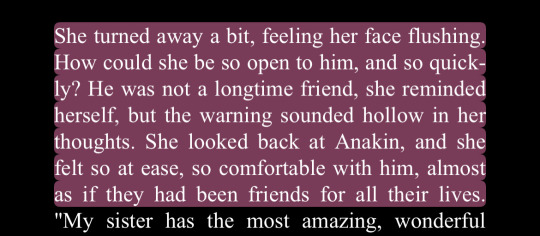
They already feel a connection to one another, even though they hadn’t been in contact for 10 years, it was the inevitable magnetism between them that inevitably pulls them toward each other. Later on in AOTC, after they’ve settled down in Naboo: They let loose, talk about their lives, open up about their insecurities, laugh, play, have fun on riding Shaak backs, and roll around in the grass. Once again reminding us how easy it was for the both of them to become close and feel allowed to be themselves for once.

But AOTC isn’t where it ends. Even after they marry, Anakin and Padmé remain great friends all while being husband and wife whom are madly in love with one another! Some of my favourite moments of this, is in the comics itself. (Specifically Star Wars Adventures, #5 and #12 and Halycon Legacy.) They sparred together for fun, joke and tease each other all while on duty and went on missions together when the occasion called for it! And we know they always wanted more time to spend together.
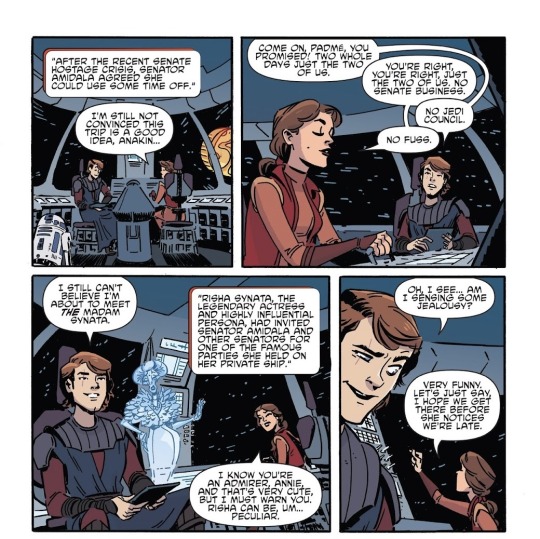
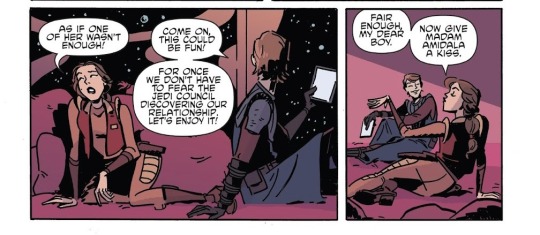

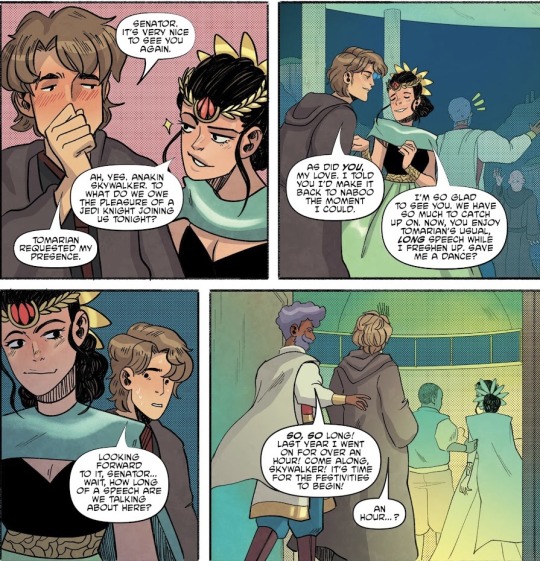
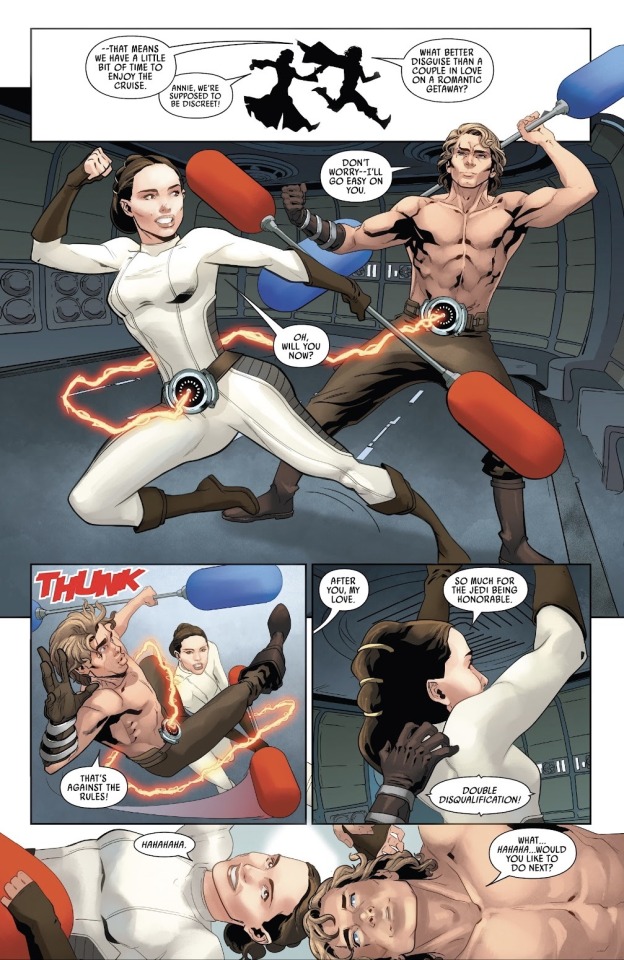
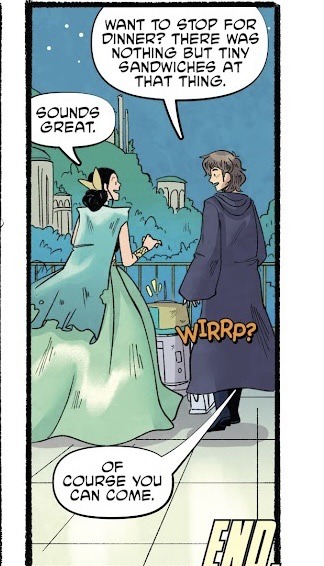
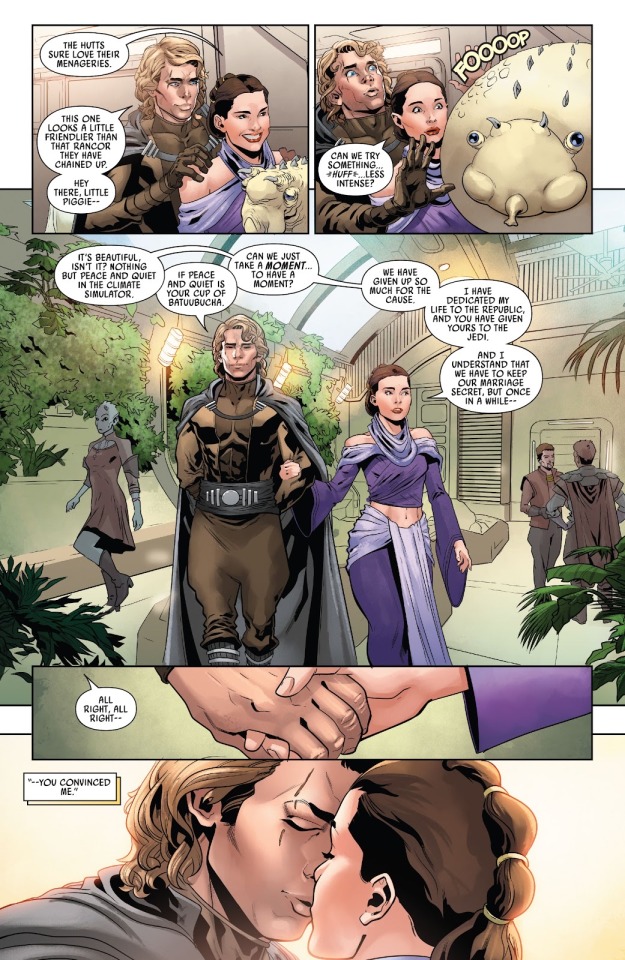
They incorporated so much of their work life into their personal lives as well, because they can’t imagine being separate from one another in those aspects of their life either. Anakin and Padmé are best at having fun while on duty. Whether it be finding time to spar for fun, have dinner together, go to the theatre and see a play, and walking hand in hand in a menagerie, observing interesting creatures. They were the best at making the most of what they had, even if it collided with their work. It takes a level of trust and dedication to be able to mix up work life with family life.
Their devotion and support to one another is part of what makes them so good for each other!
(I have a follow up meta post for this one!)
#star wars#anidala#anakin skywalker#padmé amidala#sw novels#sw comics#attack of the clones novelization#star wars adventures comics#star wars halycon legacy#anidala study#meta
70 notes
·
View notes
Text
My Masterlist
Here is my current masterlist, I will be updating this regularly. Feel free to drop a request or idea in my inbox, Requests are always welcome! (LAST UPDATED 11.27.24)
Fandoms: Harry Potter, Mauraders, Marvel Cinematic Universe, Star Wars, A series of unfortunate events, Supernatural, Doctor who, Euphoria, Riverdale, Skins, Glee, American horror story, The walking dead, 5 seconds of summer, Legend of zelda, The last of us, The hunger games, Divergent and anything else I post on my Main Account.
Harry Potter
Regulus Black
For the first time - No matter how bad it gets at home, there's one person that makes Regulus happy no matter what.
French Poetry & Chocolate - *Requested! A Regulus black x Slytherin reader where they are best friends and the reader gets her period and he helps and comforts her? No worries if not!
Dating Regulus Black Headcannons
Sirius Black
The Announcement - Rockstar!Sirius' wife is pregnant.
Memories - Harry reads a love story from his Godfathers old journal.
Remis Lupin
Scars - Remus is insecure.
Theodore Nott
Jealousy - What could go wrong when seeing other people?
I'll always stand up for you - Theo gets himself into a fight.
Promise - Theodore makes a promise by giving away his mother's ring.
We're just kids.. - Theodore falling in love with his best friend.
Bad idea, right? - Based on "Bad idea right" by Olivia Rodrigo.
Smithereens - Based on "Smithereens" by Twenty One Pilots
My Chef - Italian!Theodore flaunts his pasta-making skills.
Theodore Nott Headcannons.
Dad!Theodore Nott Headcanoons.
Drowning - our anniversary date with Theodore takes a turn.
Vero Amore - Multiple Part Mini Series. *Completed
Part 1 ~ Part 2 ~ Part 3 ~ Part 4 ~ Part 5
Finally. - Does Thedore Nott hate you?
Talk, Talk - Based on Talk Talk by Charli XCX
The End - Based on The End by Halsey
Bad Boyfriends - your boyfriend treats you terribly and Theodore comforts you when you finally break up. Then you realize you love him.
Amortentia - The most powerful love potion in the world.
Father of the year - Dad!Theo
Marvel Cinematic Universe
Peter Parker - Spider-man
All over again - Peter falls in love for the second time. or maybe it's still like the first time.
Dad!Peter Parker Headcannons.
OuterBanks
JJ Maybank
Through it all - Based on the last few episodes of Season 4.
Thats my Girl! - Ruthie gets what she deserves
Bright Future Ahead - JJ gets his act together finally.
The Adventure Beyond - Dad!JJ Maybank
You Deserve Better - your boyfriend SUCKS
Always (by your side) - You are by his side after morocco.
Swimming - JJ teaches you how to swim.
#reader insert#my writing#x reader#hp x reader#hp#slytherin x reader#theodore nott x reader#theodore nott x y/n#theodore nott#regulus black x y/n#Masterlist#remus x reader#remus x sirius#spiderman imagine#spiderman x reader#across the spiderverse#into the spider verse#miguel spiderverse#spiderman#harry potter#imagines#fluff#oneshot#fem reader#smut
129 notes
·
View notes
Text

Adventure Journal 08
18 notes
·
View notes